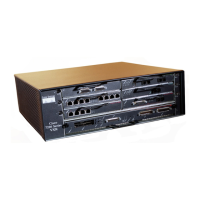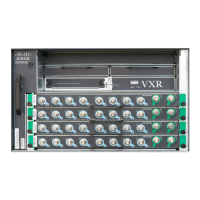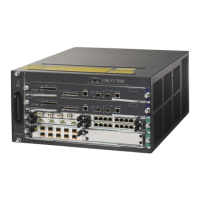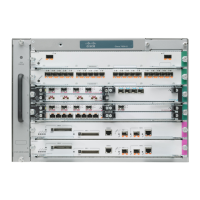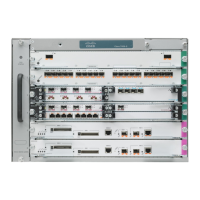Send document comments to nexus7k-docfeedback@cisco.com
8-2
Cisco Nexus 7000 Series NX-OS Interfaces Configuration Guide, Release 5.x
OL-23435-03
Chapter 8 Configuring IP Tunnels
Information About IP Tunnels
• Passenger protocol—The protocol that needs to be encapsulated. IPv4 is an example of a passenger
protocol.
• Carrier protocol—The protocol that is used to encapsulate the passenger protocol. Cisco NX-OS
supports GRE as a carrier protocol.
• Transport protocol—The protocol that is used to carry the encapsulated protocol. IPv4 is an example
of a transport protocol.
An IP tunnel takes a passenger protocol, such as IPv4, and encapsulates that protocol within a carrier
protocol, such as GRE. The device then transmits this carrier protocol over a transport protocol, such as
IPv4.
You configure a tunnel interface with matching characteristics on each end of the tunnel.
For more information, see the “Configuring IP Tunnels” section on page 8-4.
You must enable the tunnel feature before you can see configure it. Beginning in Cisco NX-OS Release
4.2, the system automatically takes a checkpoint prior to disabling the feature, and you can roll back to
this checkpoint. See the Cisco Nexus 7000 Series NX-OS System Management Configuration Guide,
Release 5.x, for information on roll backs and checkpoints.
Beginning with Cisco NX-OS Release 4.2, a tunnel configured in one VDC is isolated from a tunnel with
the same number configured in another VDC. For example, Tunnel 0 in VDC 1 is independent of tunnel
0 in VDC 2.
Beginning with Cisco NX-OS Release 4.2, your tunnel source IP address and destination IP address
should be in the same VRF.
GRE Tunnels
Note Beginning with Cisco NX-OS Release 5.1(1), the software supports multicasting over GRE tunnels.
You can use generic routing encapsulation (GRE) as the carrier protocol for a variety of passenger
protocols.
Figure 8-1 shows the IP tunnel components for a GRE tunnel. The original passenger protocol packet
becomes the GRE payload and the device adds a GRE header to the packet. The device then adds the
transport protocol header to the packet and transmits it.
Figure 8-1 GRE PDU
Original IP
Header
Original Payload
Passenger
Protocol
Delivery
Header
GRE
Header
GRE Payload
Added Headers
Transport
Protocol
Carrier
Protocol
Original Packet
185053
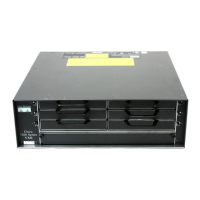
